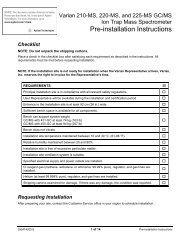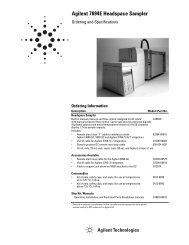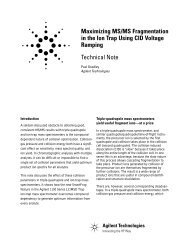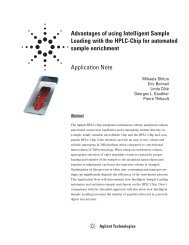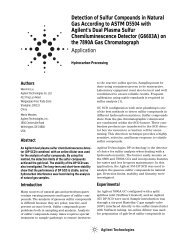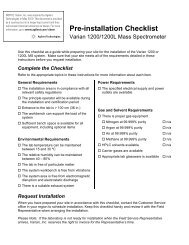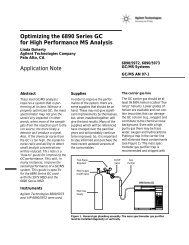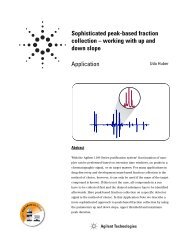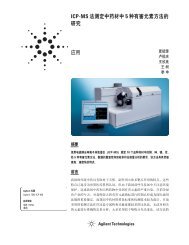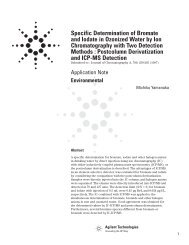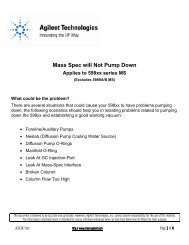Microplate Barcode Labeler User Guide - Agilent Technologies
Microplate Barcode Labeler User Guide - Agilent Technologies
Microplate Barcode Labeler User Guide - Agilent Technologies
You also want an ePaper? Increase the reach of your titles
YUMPU automatically turns print PDFs into web optimized ePapers that Google loves.
22<br />
Chapter 2: VCode orientation<br />
VCode <strong>User</strong> <strong>Guide</strong><br />
The different ways to label plates<br />
Introduction<br />
This topic explains the different ways to label plates. If you are new to<br />
the VCode and are not sure where to start, this topic will help to orient<br />
you.<br />
You can:<br />
❑ Test print and apply one label<br />
❑ Test print and apply a batch of labels<br />
❑ Print and apply a batch of labels in a production run<br />
Test printing one<br />
label<br />
After setting up the VCode, or when you are trying to solve a printing<br />
problem, you can perform a test print of a single label and optionally<br />
apply it to a plate from the Testing page of VCode Diagnostics.<br />
When you are designing a label, you can test-print a single label from the<br />
Label Editor page of VCode Diagnostics.<br />
Test printing a batch<br />
of labels<br />
You can perform a test print of a batch of labels, and optionally apply<br />
them to one or more sides of a batch of plates. This test printing is also<br />
performed from the Testing page of VCode Diagnostics.<br />
As this is a simple testing procedure, every label printed will be the<br />
same. You will also have to manually place the plates on the plate stage<br />
as the labels are printed.<br />
Production labelling<br />
of a batch of plates<br />
For production labelling of a batch of plates you can either place plates<br />
onto the VCode manually or use a robot.<br />
Manual production labelling<br />
With manual production labelling, you place a plate on the plate stage,<br />
press the green button, wait for the plate to be labelled, remove it and<br />
then repeat the cycle.<br />
For manual production labelling you create a label format that specifies<br />
the labels that you want to use. The label format may reference an<br />
external data source, such as a spreadsheet, that includes the data to<br />
print in each field. You must also set up a print job in PlateTag that<br />
combines the data from the data source with formatting information that<br />
you provide and directs the printing and applying operations.<br />
Automated production labelling<br />
Automated production labelling requires a lab automation system that<br />
uses a robot to move plates to and from the VCode’s plate stage. Robotic<br />
systems control the VCode with their own software. This software may<br />
be able to open VCode Diagnostics, allowing you to control basic<br />
VCode operations directly.<br />
If you are using a BioCel or BenchCel to label plates you have more<br />
complex options for the labelling protocol. For example, using the<br />
FileReader plug-in you can print two fields that use different input data



